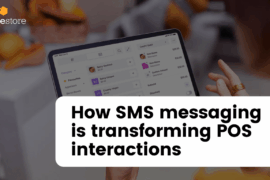The more technology advances, the more it’s stick with our daily lives. The lines between what we do online and in real life will begin to blur.
And as people change their behaviors, retailing managers really need to react wisely.
Uncle Ben in Spider Man used to say “With great power comes great responsibility”. What a wise advice! As a store manager, you have a great power to manage every movement in your business. However, it also means you need to take high responsibility with what you do.
Instead of thinking of how to manage the business to get a desktop experience, a mobile experience, a tablet experience, or any experience, we’ll need to pursue one, how to get a holistic approach – Omnichannel – the retailer’s trending now.
So, how to get right decision and improve business management quality?
The article here will help you answer the question.
I. What is Omnichannel Management?
Before we get into the conclusion, let’s take a quick look about the evolution of business
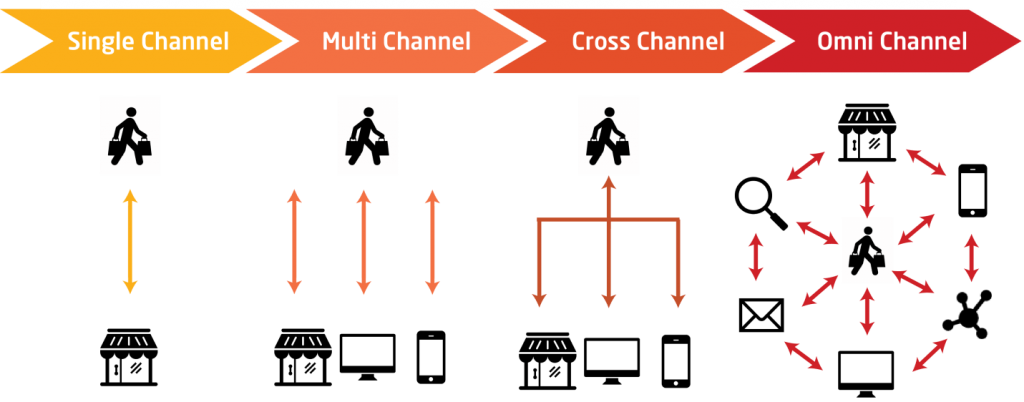
1.The evolution of business:
We will see how the evolution of selling channel changed the way we manage our business.
- The commercing started from a Single channel, where customers learnt about your product and service. This kind of business had a strong focus on how to have attractive content or catchy decoration. Management for Single Channel is simply product management and marketing management.
- Technology improved, which means that customers had more places to buy their favourite products (online or offline). Many retailers quickly took this technology advantage, enlarging their chances to meet customers. That’s how Multi-channel came to life. A business would have more than one channels to sell. Each manager managed one channel, building separated strategies for each channel. This led to high-competition between channels inside the business
- However, retailers soon felt tired of the “fight” among channels, while customers began to suspect more before purchasing. To increase customers’ satisfy and ensure their purchase in the future, retailers changed to Cross-channel, allowing customers use different channels to purchase products, such as buy online then pick up in-store. That is why retailing managers started to improve the relationship between each channel.
- Then, the closer relationship among selling channels brought out the born of Omni-channel. Customers experience a seamless shopping journey. Managers begin to put a strong focus on how to get higher number of loyal and satisfied customers. To reach this point, all business managers can get both the overview and detailed report of all channels and the whole business, leading to a consistent marketing via all channels.
2.The Omnichannel Management
In brief, we can take a conclusion that:
The Omni-channel Management is to
|
So, how to build up good Omni-channel Management System?, you may ask.
Let’s scroll down a little bit.
II. Need-list for the best Omnichannel Management System:
To manage Omnichannel effectively, you need build up strong Omnichannel Management System.
In this part, we will share you a basic view how an Omnichannel can and should work. These are need-list modules to get the best Omni-channel Management System.
Remember! All these modules need to be integrated together.
1. ERP (Enterprise Resource Planning)
It is one type of business management software which allows an organization to use a system of an integrated application to manage the business and provide automate many back office functions related to technology, services and human resources as well.
ERP Software integrates most of all facets of an operation – including product planning, manufacturing, development, marketing and sales – in a single database.
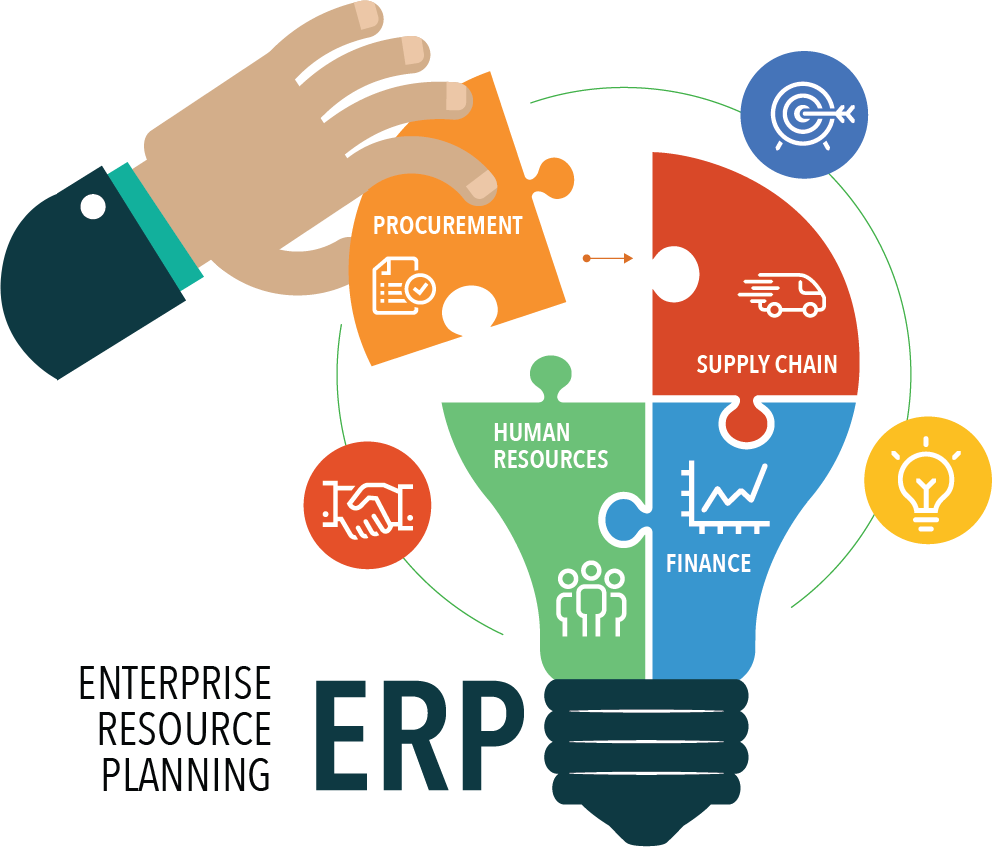
However, there are two kinds of ERP:
- Cloud ERP System:
ERP Software integrates all facets of an operation, such as Customer Relationship Management, POS, Inventory Management, Vendor Management, eCommerce Management, M-commerce Management, etc.
All your data will be synced to cloud (third party). They will help you save these data. However, there is a threat lost of data here.
There would not be a full package of an operation. Instead, the ERP System will hold essential functions inside (based on the type of your business and what you really need)
All your data will not be synced to any third party. Everything would be right inside your backend system. Only you and your team can view it.
To understand clearly, which functions are essential in ERP, you can read below.
2. Inventory and Order Management
How Inventory and Order Management works
In Omnichannel, there is a core rule: Never let your store out-of-stock (in other words, always have available stocks for your customers in any situations and any channels). This rule may sound ridiculous to most of anyone first time hearing about it. However, Omnichannel can do this effectively.
If before, stocks in your warehouses are controlled separately or lost huge amount of time entering and tracking stocks, then the situation will not happen you in Omnichannel Management System.

All warehouses you got (no matter where it is) will be synced together in one system (maybe in one site). Anyone with the permission to access in backend system can see the number of available stocks in any warehouses
If you wonder whether an item is on your warehouse or in somewhere else, then you can get into the backend, click on the product, then the number of stocks available in each warehouse will be shown.
- Inventory Management
Most of retailers are freaking with tracking Inventory after a busy sales day. Omnichannel Inventory Management will soothe this problem.
In Omnichannel, the Inventory Management is integrated with Point of Sales system. Even a little change (such as a customer buy 1 item) will be synced (automatically reduce) in the whole system. However, make sure that all items in your stores and warehouses got the barcode sticked on it. Every single movement will be scanned through barcode. Then the barcode scanner will be able to transform the change of item status for the system.
After the day, you just need to view reports to see how many stocks are available and how many you have sold.
- Order Management
Most of Omnichannel Management system helps you got a full view of all orders you received. Those orders can be sorted by stores, or dates, or products, or locations (based on which kind of sort works for you).
What you need to do with Order Management is to keep track of order process on your backend system. You can also modify or add any transactions that start in one channel and end up in another channel (E.g: buy online, pick up in-store).
Most importantly, any managers on the system (of course who get the permission) can view/edit the change in transactions, shipments, order fulfillments.
- Supplier Management
If you want to “never let your store out-of-stock”, then you need to have a good connection with the supplier.
The Omnichannel Management system will help you get a full view of essential information about your Supplier like Supplier Contact, Code and Status. Then, you can send quotation, prepare quotation to send to the supplier, whenever you click on the button.
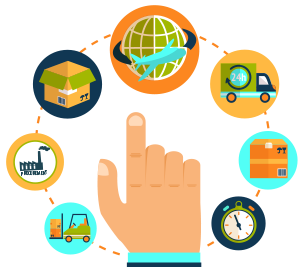
MUST-HAVE FEATURES:
Data Centralization: centralize all data relating to Inventory Movement, Order Fulfillment, In-stock Movement and Warehouse Management
- Real-time Update: avoid entering the same information more than 2 times. The system will automatically update even a small change in data.
- Inventory Visibility: IPOS staffs can see the number of stocks available in the current store, other stores in the business chain, and in the warehouse.
- Barcode Scanning: instead of entering each number on the name of SKU, you just need to scan the barcode, the system will automatically update in the backend.
- Reports: the system will automate to publish inventory reports, sales reports and order reports daily, weekly, monthly or any time that you set
- Supply Need Forecast: after setting up in the backend, the system will learn the trend of you inventory and send you a message whenever you need more and how much more do you need.
- Low Stock Notification: avoid low stock situation, whenever you are in risk of low stock, the system will notify you on the management site and via email
- Overall Views of Order Process: you can see and easily modify (if need) the whole process of orders (from Verify, Fulfill, Pick, Pack, and Deliver)
3. Point of Sale (POS)
How pos works in Omnichannel
Most of POS will not work independently. It will work along with Inventory Management, Purchase Management, Loyalty Programs, etc. (based on your business type).
However, in the most basic way, you can see the Omnichannel POS works like this:
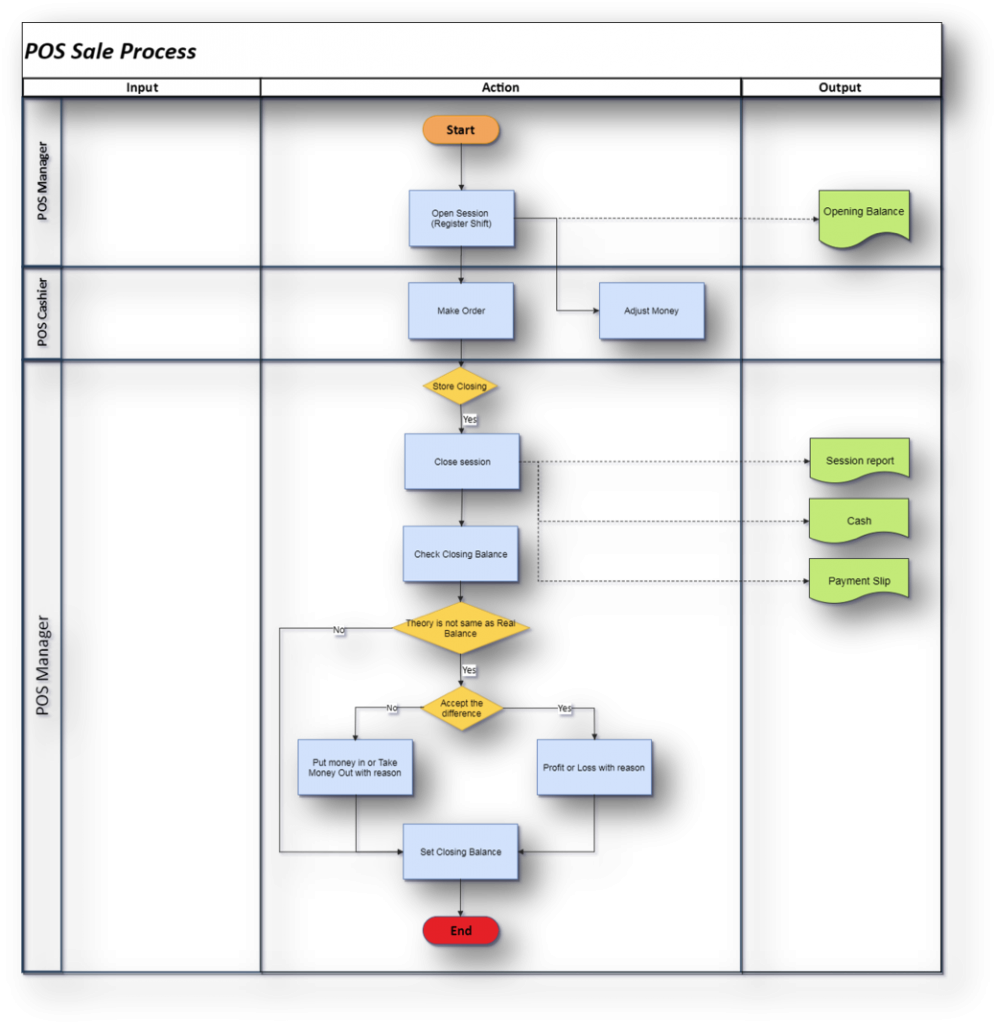
To get clear how it works in the system, read here
MUST-HAVE FEATURES
- Security: use EMV-compliant POS to protect your customers and yourself from credit card fraud. Besides, system security should be PCI-compliant and allows point-to-point encrypted payments.
- Power Backup: ask the provider about hybrid architecture that enables the POS system to run offline or via a local network.
- Integration: look at which third-party does the POS System support. You must choose the one with open API and flexible to integrate with your important third-party systems
- Flexible to pay in various methods: not only able to use various means to pay (such as pay by credit card, debit card, cash, or some other third party payment) but also flexible to pay in different methods, such as Partial Payment (Pay half by this, half by that), Cash-on-delivery, etc.
4. CRM (Customer Relationship Management)
CRM is a system (similar to ERP system we mentioned above) for managing all your company’s relationships and interactions with your customers and potential customers.
The type of data and where it’s stored are essentially the foundation for personalizing customer engagement at scale.
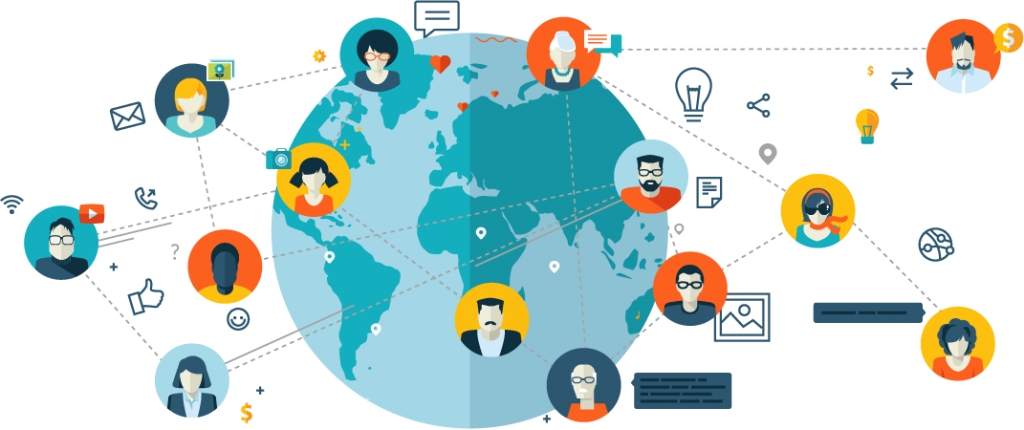
All your process about marketing with customers is streamlined with modern business tech and human input, and the Omnichannel CRM is where the two intersect.
The Omnichannel CRM contributes to your real-time operational insights across channels, and in some ways provides a channel to respond to them, like steering a social media customer service complaint into a private channel to head off negative publicity. However, the true value of CRMs in an omnichannel world is to infuse customer interactions with personality and empathy, which are crucial differentiators for the modern customer who has already come to expect convenience, speed, and consistency.
5. Loyalty Management
After having a good CRM, what you need to do next is ACTION!
In Omnichannel, there are a lot of ways to gain loyal customers. However, you should always remember two basic rules to implement Omni-channel Loyalty Programs:
#1: Personalization
Everyone loves to be special. Either your customers. Therefore, use CRM data to design personalized marketing for each customers. That sounds complicated? But take it easy. Let’s think about the most simple yet personalized way – sending Points on Customer’s Birthday.
You can automate the system to send a number of points whenever customers got their birthday.
Or getting some catchy discounts on their days is also “not a bad” idea!

#2: Use Points
In Omnichannel, you can easily use Marketing tools such as Reward Points, Store Credit and Gift Card to remind your customers about how much you love them.
- Reward Points: your customers can earn points when they spend in your stores. Then they can use the points for next time purchase. It will be effective if you customize an email in the system to remind them about the “missing” points on your stores. (You may not need send that email, just set up on the system the time and content, then system will automatically send it for you with a personalized content)
- Store Credits: there will be a time when your customer want to purchase in your store but they forget the wallet. So how to help them? Ask them to buy Store Credit, which they can turn their money into credits and save it on your stores. For the next purchasing, they can use the credit to buy products. Or they can send that credit to their friends, which help you gain new customers. But as above, don’t forget to set up an email to remind them
- Gift Card: this is the best tool to attract new loyal customers. Your old customers will buy this and send to their friends (most friends are new to your stores). They can use Gift Card to shop in your brand.
So what you need to do now is Install this amazing extensions, and set up on your backend. Just a few clicks, you will get all the tools above and implement your wise marketing strategies.
III. 4 Core Strategies in Omni-channel Management
1. TOP advice: Data Centralization
All data related to your business need to be centralized in only ONE system.
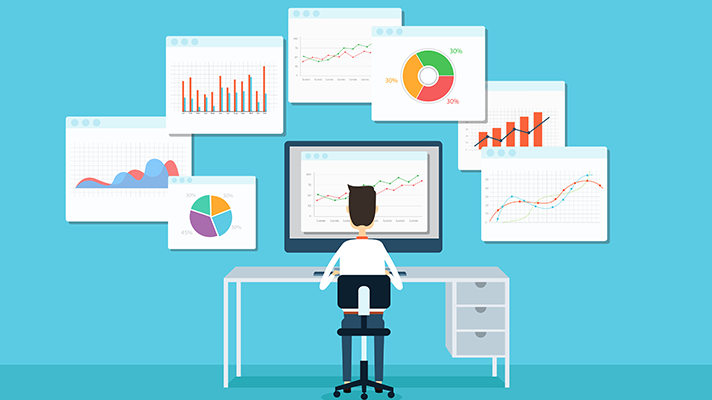
Unified information enables “omni-inventory” management from purchasing all the way through to allocation. Once the retailer has rethought product choice from channel to customer preference, merchandise can be re-aligned to create an agile environment that supports the customer. This agile environment requires the right assortment choice, consistent price across channels and customer interaction. With an integrated, complete understanding from buyers to sellers, retailers can deliver an omnichannel strategy from planning all the way through to targeted selling.
2. Backend Management: Real-time and Automatic
You can’t grow if you do not have the strong base. Seriously. So that, if you are new to Omnichannel, you should build up a strong base a.k.a strong backend system.
One cannot define how a strong backend system would look like. However, there are two basic things you should take a look:
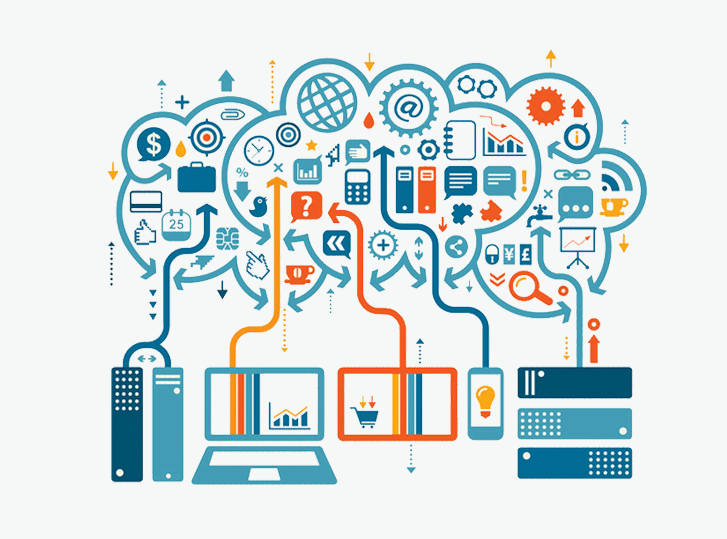
Integrated Modules to get real-time update
To run Omnichannel, you need to integrate all your business extensions into one system. Moreover, not only you but even your staffs can use this backend system (if permitted).
In addition, your system should update the change automatically and in time ( which is called as ‘real-time’).
You cannot waste a huge amount of time just to entering same information, or do reports that a computer can automatically create, or count, calculate the number of stocks you had, have and will have. Let the system do it for you. Use the time to plan other business strategies.
3. Staff Management: Know what they do
A strong backend is not enough if you have a medium-sized or big sized business. Therefore, take care of your staffs.
All their works and data should be updated in the system.
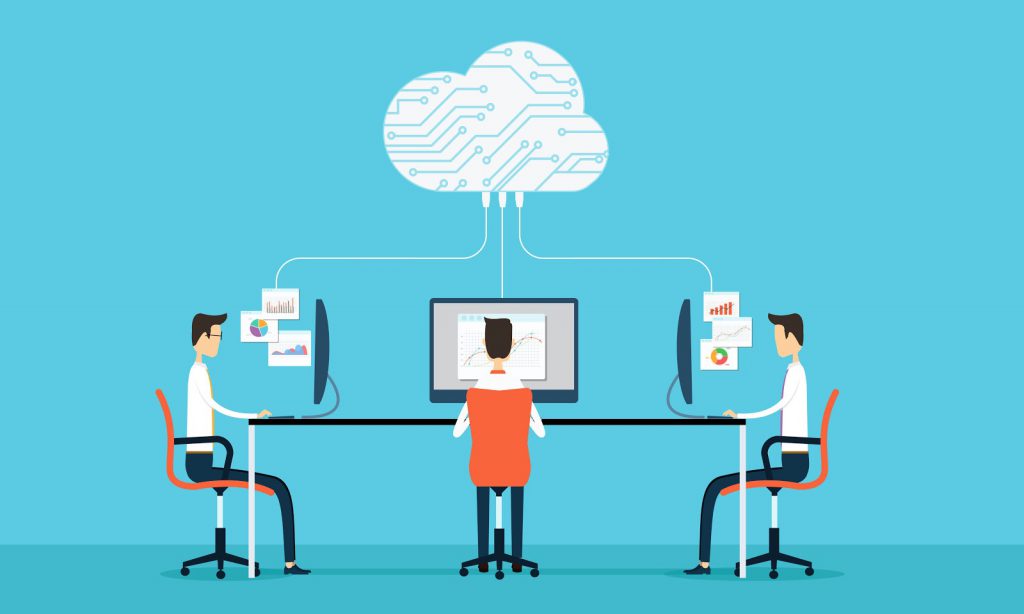
In brief, you should use the Omnichannel Backend System to:
- Give permission
Give them the task, what they need to do, what they can or cannot do, and what is your goal. Give them all in the system, instead of coming to them and ask them to do. This will not only save your time but also make all the tasks look clear and effective
- Manage their working
Also, you can track their works on the same system, see the status of their works and track the effectiveness (the KPI) of what they have done.
Let’s think about it! This is very important to successfully run business in this modern digital world.
4. Marketing Management: Listen, Understand, then Take action!
With Omnichannel, you have saved a huge amount of time on collecting data (thanks to data centralization), and doing report (thanks to the automatic system). What you need to do now is to see the results (data).
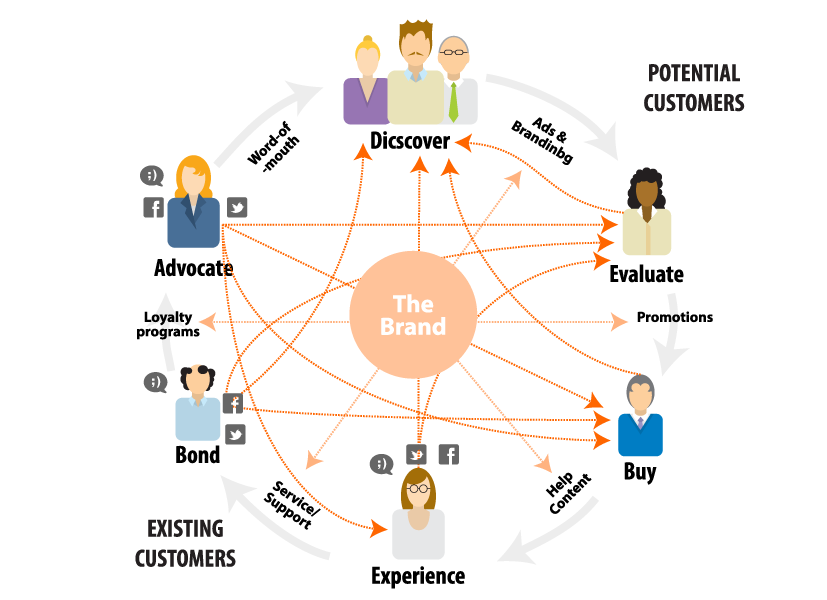
A manager cannot always have time to ask each customer. However, you can hear them say via data the backend system collected. For example, you can see their satisfaction about your service through their comments after each service. Or, you can see how they behave in your store (put something left in the cart, or use Gift Card most of the purchased times, etc.). Due to this big data, your team can understand customers’ behaviours, then analytics and build up a personalized strategy for each customer.
Then, to implement, you can use campaigns, loyalty programs, advertisements and most importantly, mobile. Never miss out the benefits of mobile when working Marketing Strategy.
In a nutshell, remember to
Listen: through data
Understand: through analytics (reports)
Take action: campaigns, loyalty programs, advertisements, etc.
Last Word
Every business has its own speciality. Either your business. Therefore, don’t force yourself too much that you need to do this, do that. Just relax. And think by heart about these core value to manage your business better.
Remember that, you always have a system to help you!




